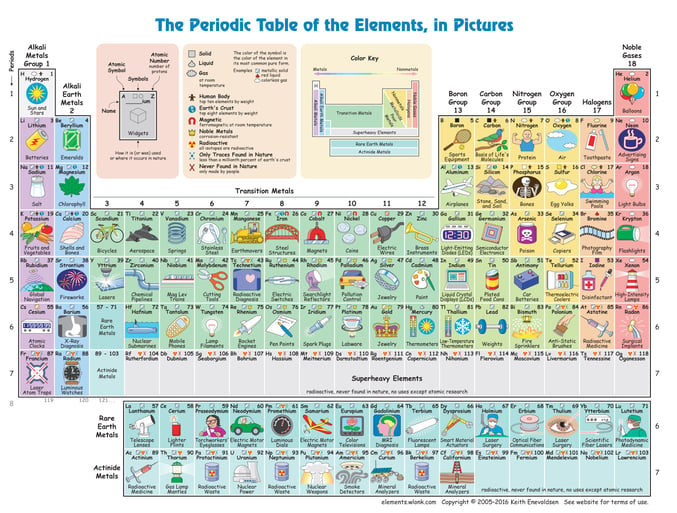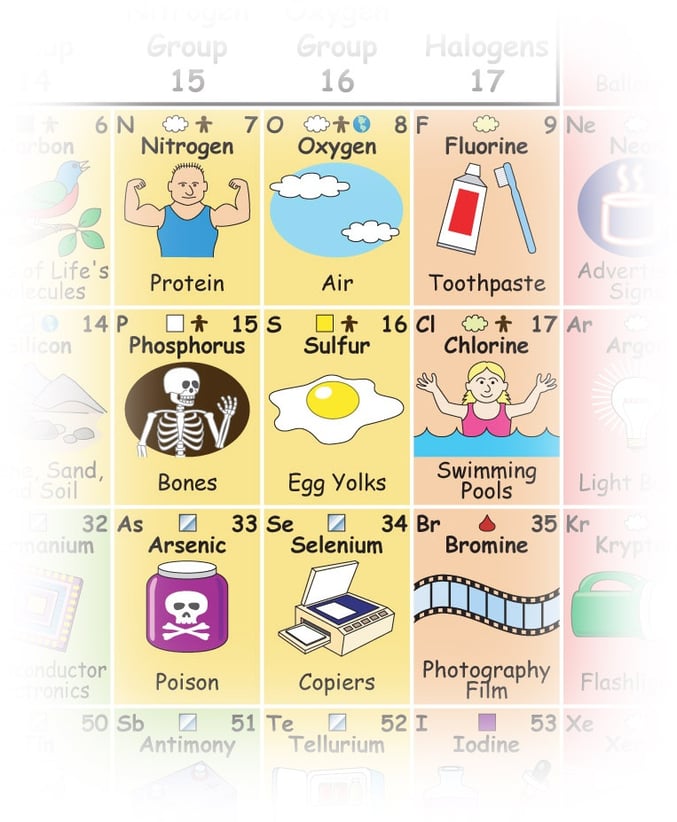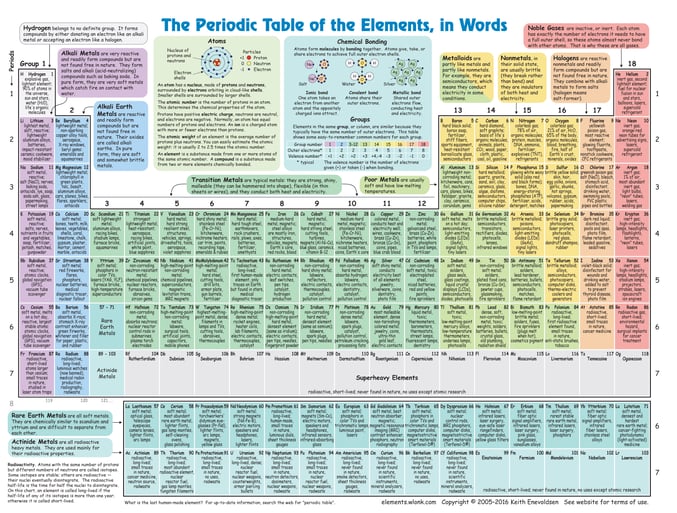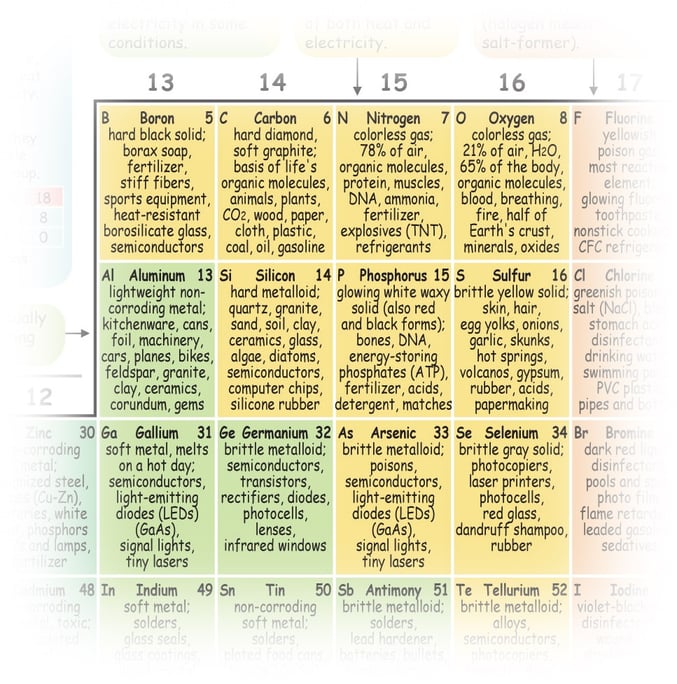According to my friends, almost all of whom are younger than I, there were only four elements in the periodic table when I was a boy: earth, water, air and fire. But all evidence to the contrary, I really wasn’t a contemporary of the great Greek philosopher Empedocles.
I became aware of the Periodic Table of Elements as developed by a much later philosopher, Dmitri Mendeleev (never met him either) in Mr Boyle's chemistry class, circa 1962. It covered the wall behind his desk. It looked a lot like this one below: it made a colorful wallcovering but seemed irrelevant to anything Mr Boyle talked about and was largely incomprehensible to anyone but the most committed chemistry students. Fortunately the years have changed the periodic table--in more ways than one. Not only are there more elements, there is an effort to make it interesting.
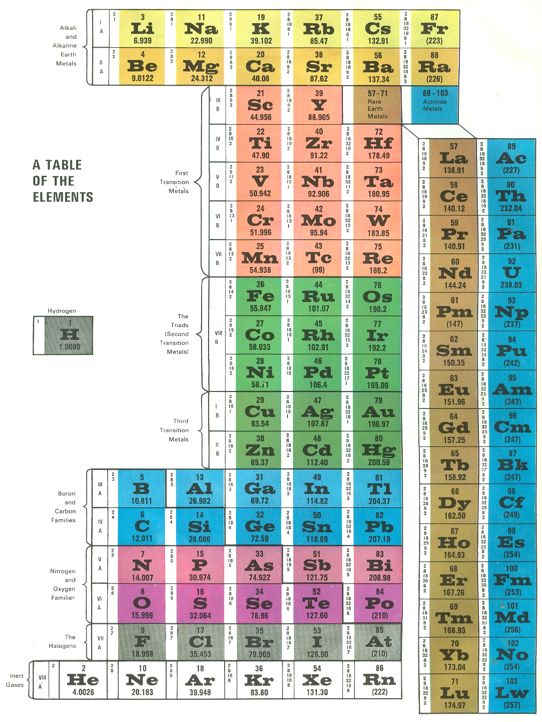
The most obvious improvement in the teaching of STEM courses like chemistry and math is the application of STEM creations to the disciplines themselves. Thus for example, robots, like those found in the innovative RobotLab Box, inspire interest and improvement in students of all ages in disciplines once considered too esoteric for the common herd: among which chemistry is one.
Another improvement, less obvious but every bit as important, has been an attitudinal one. Let me explain it this way.
When I was a boy and the science or math teacher decided there was something new to be learned, that something was taken out of a book and displayed on a chalkboard with very little alteration; a delivery system designed to inspire and entertain only those few kids that for whatever reason happened to be most receptive. But remember, explanation, not inspiration was the educational priority of the day and entertainment was beside the point. That’s changed and that’s the attitudinal improvement I'm talking about. The table of elements above doesn't cut it in classrooms today.
Below are a couple perfect examples of interesting periodic tables found in today's classrooms. Since both of them contain more information than fits into the post I have added a section of each below. As you will soon see, either of these contains far more information than the one above I first saw on the chemistry room wall.
